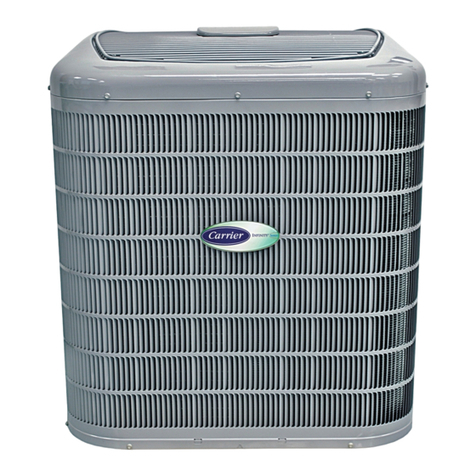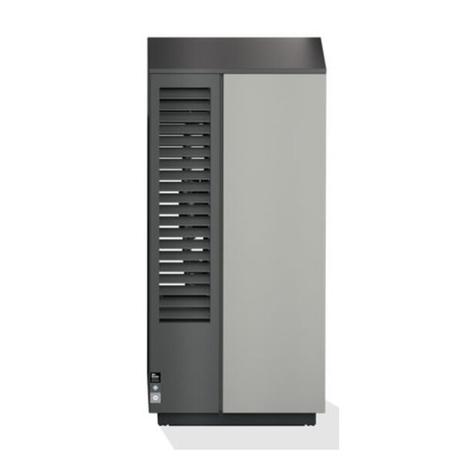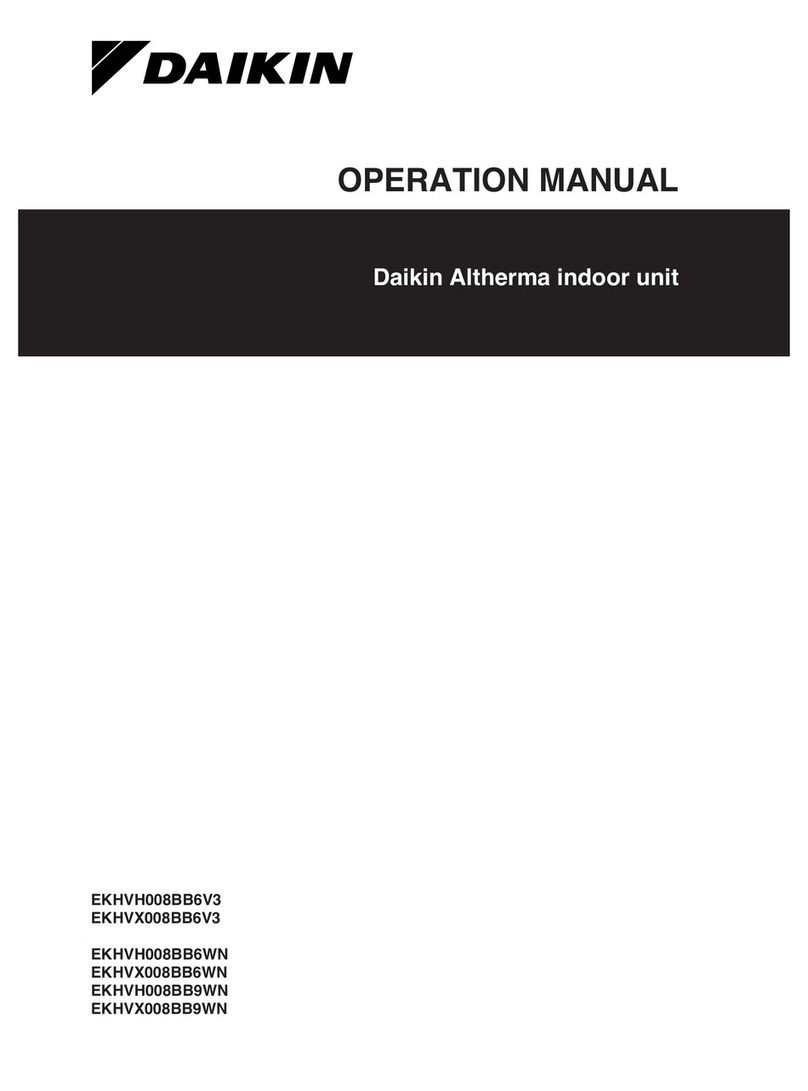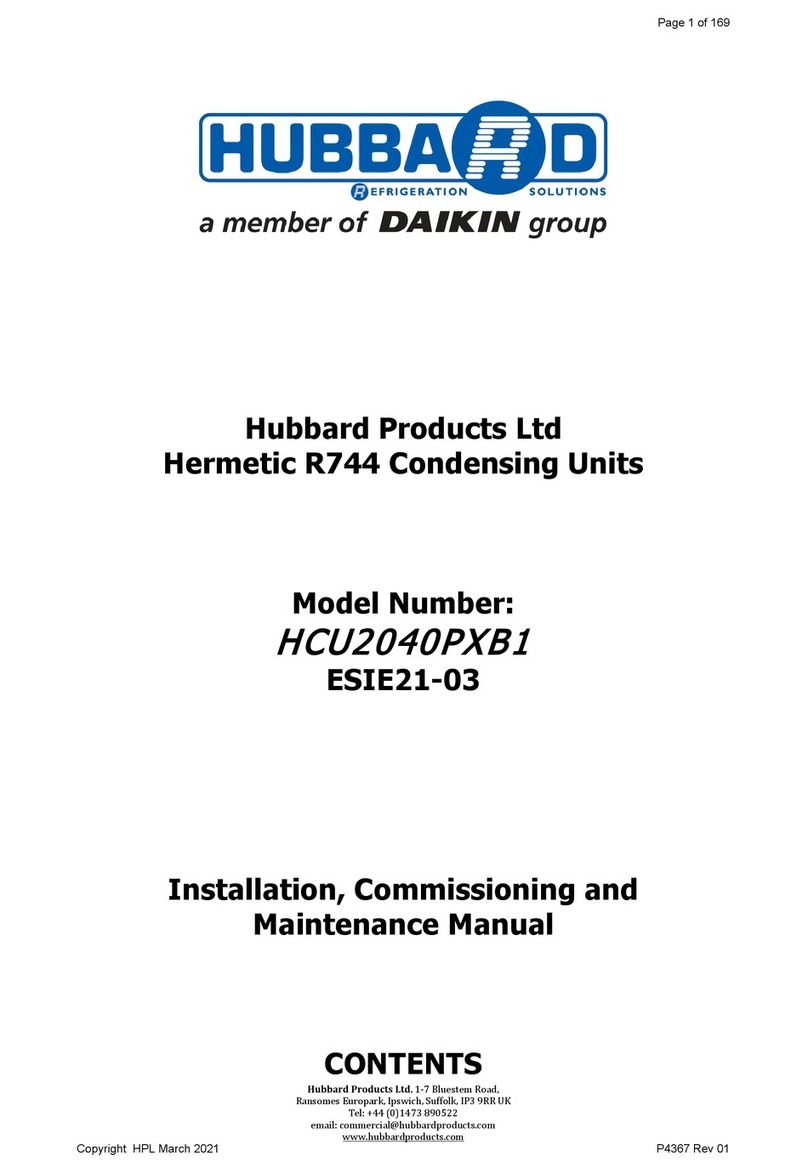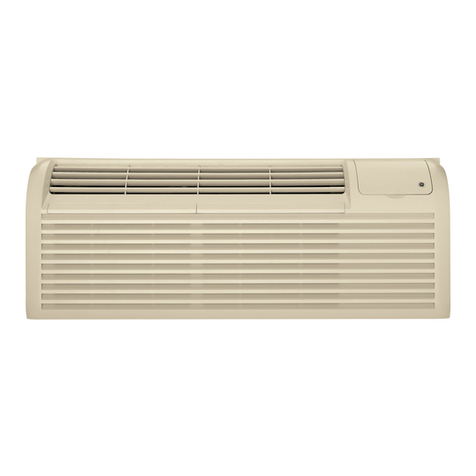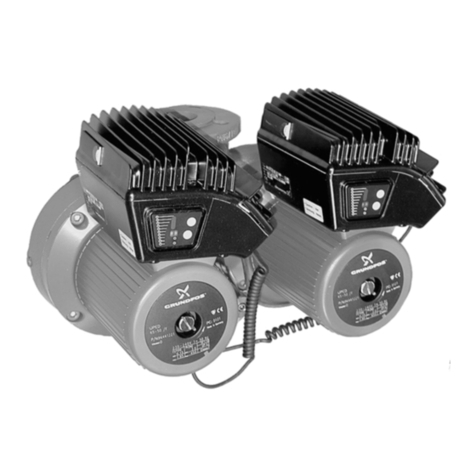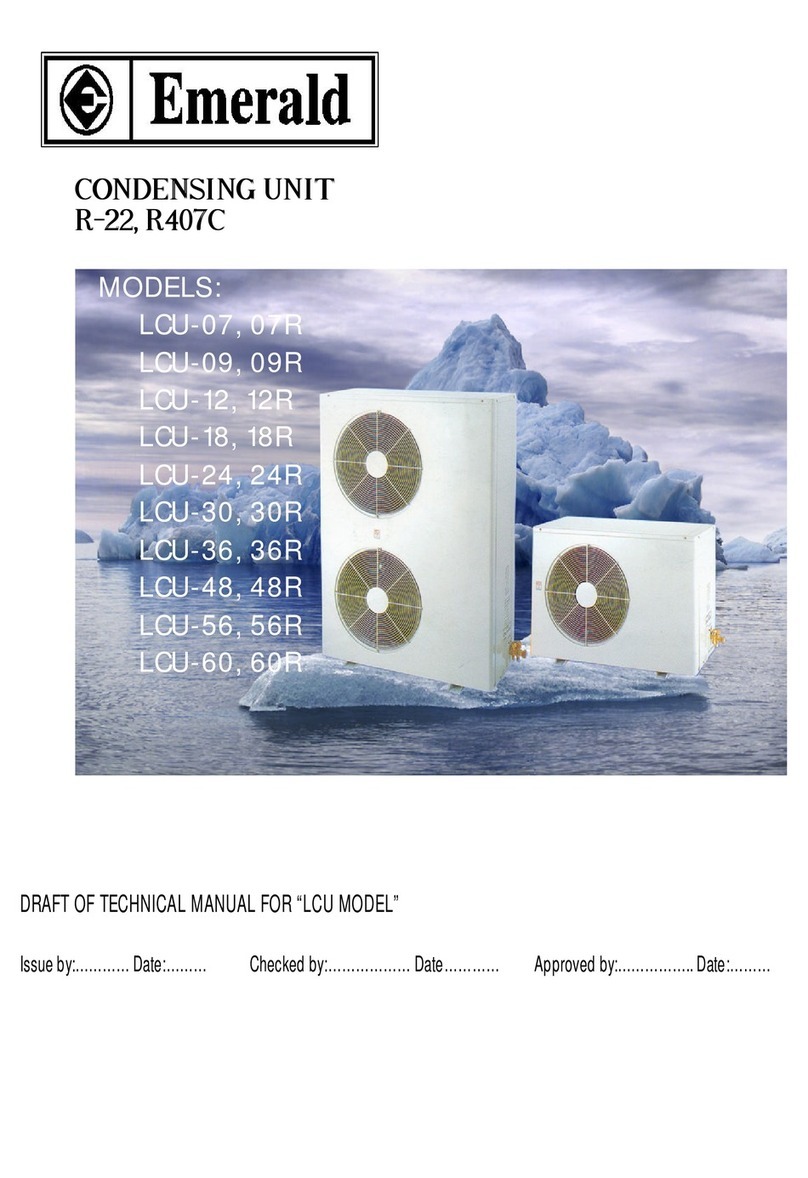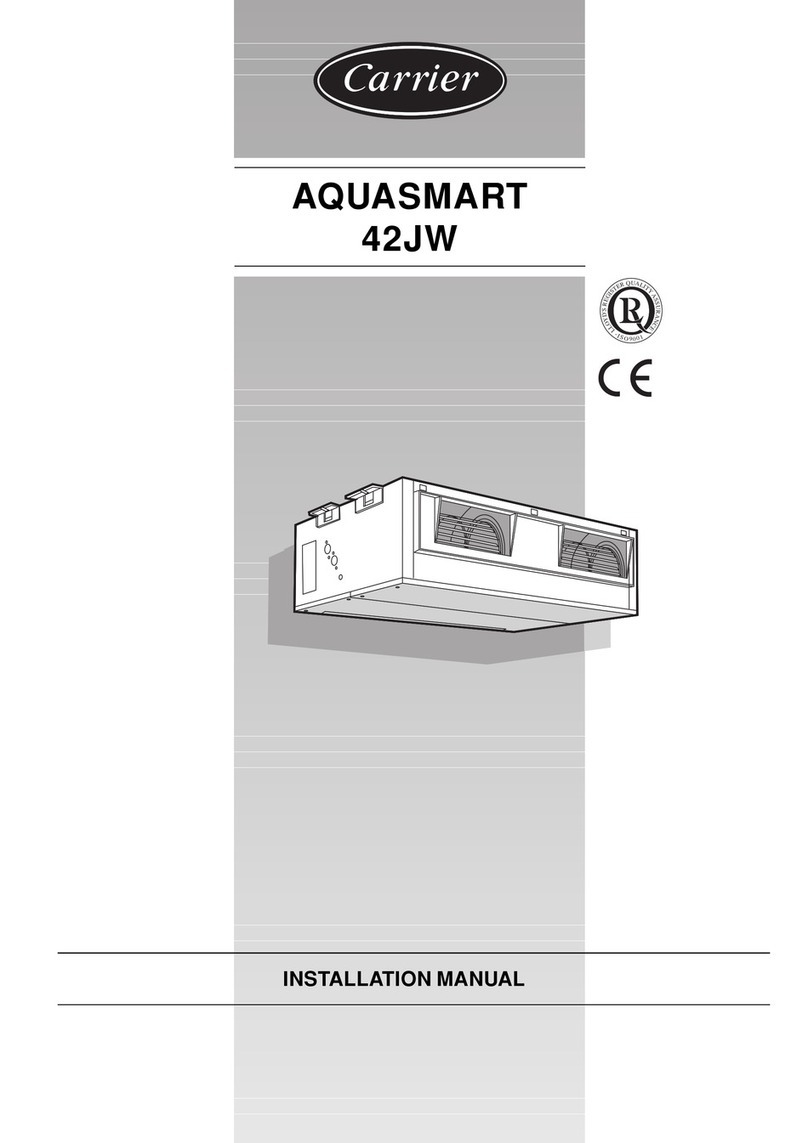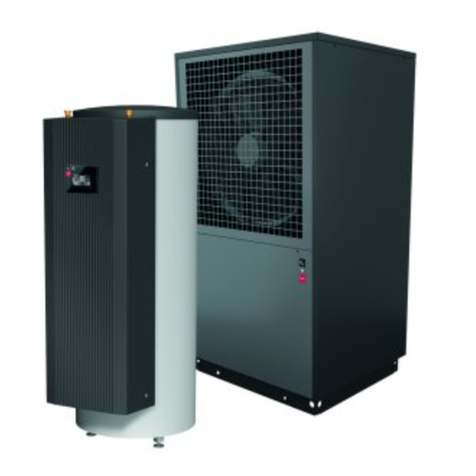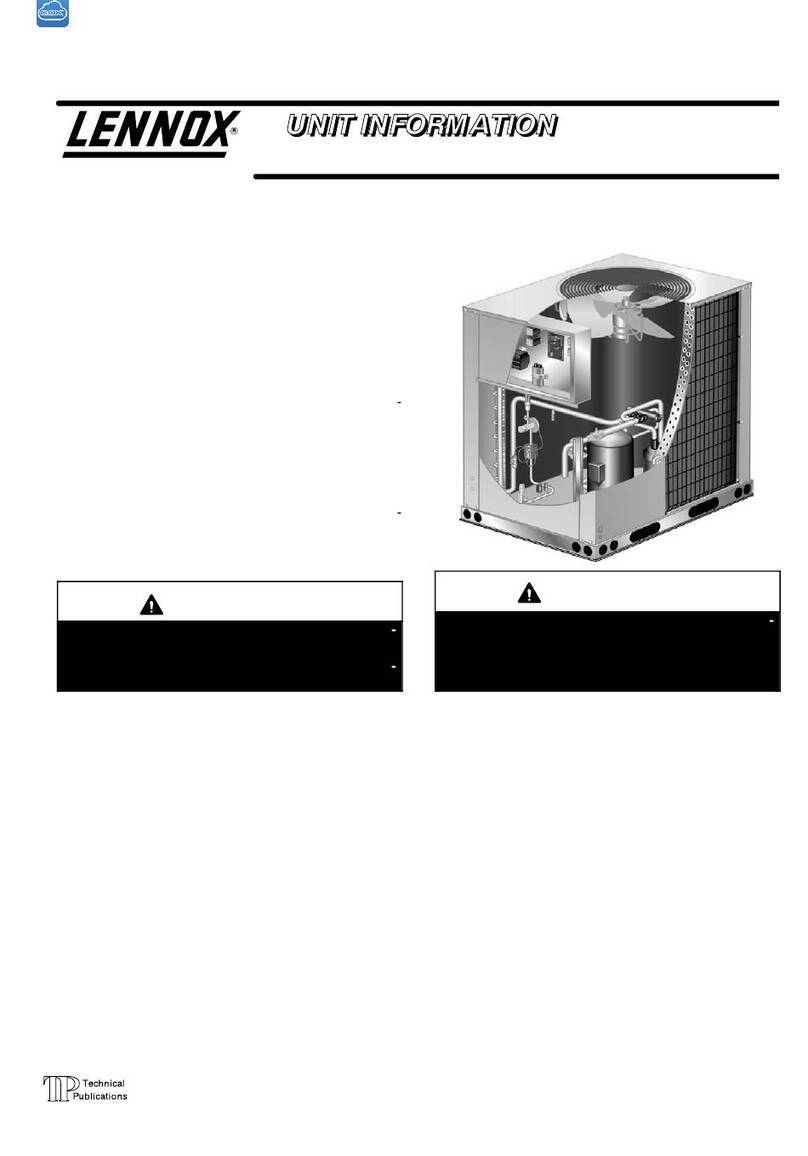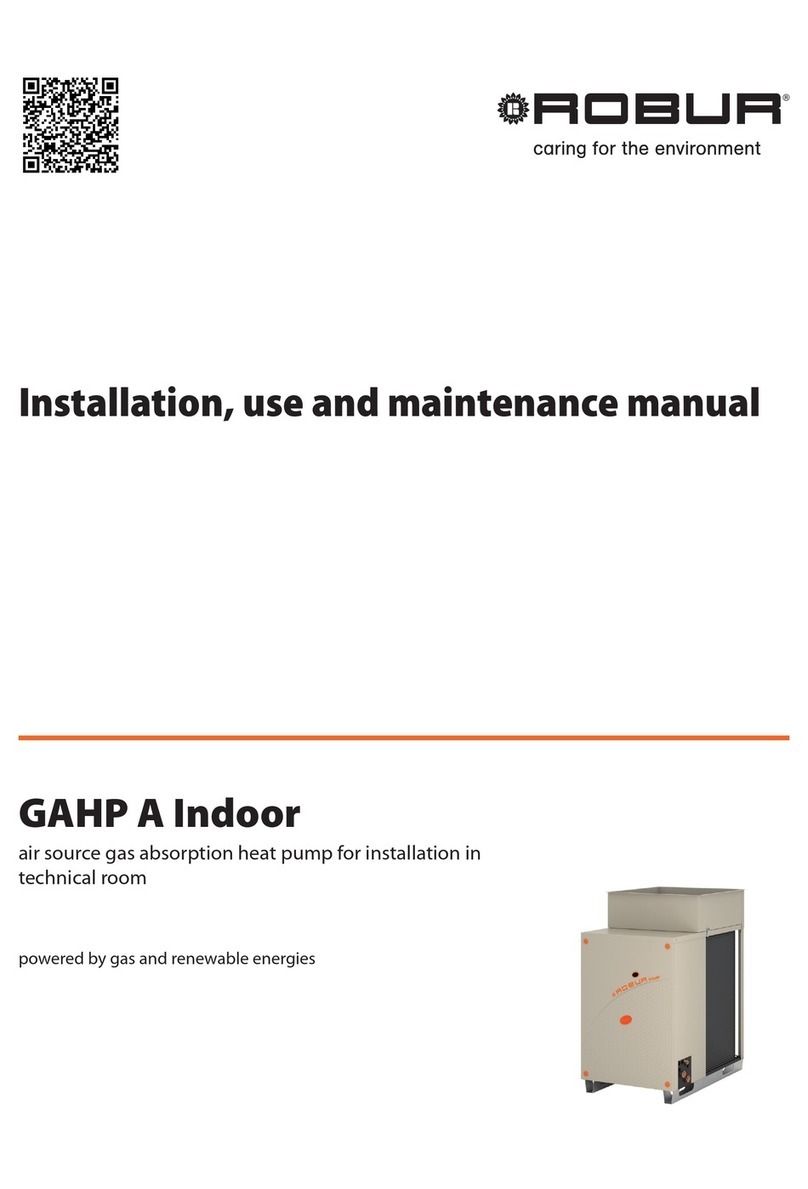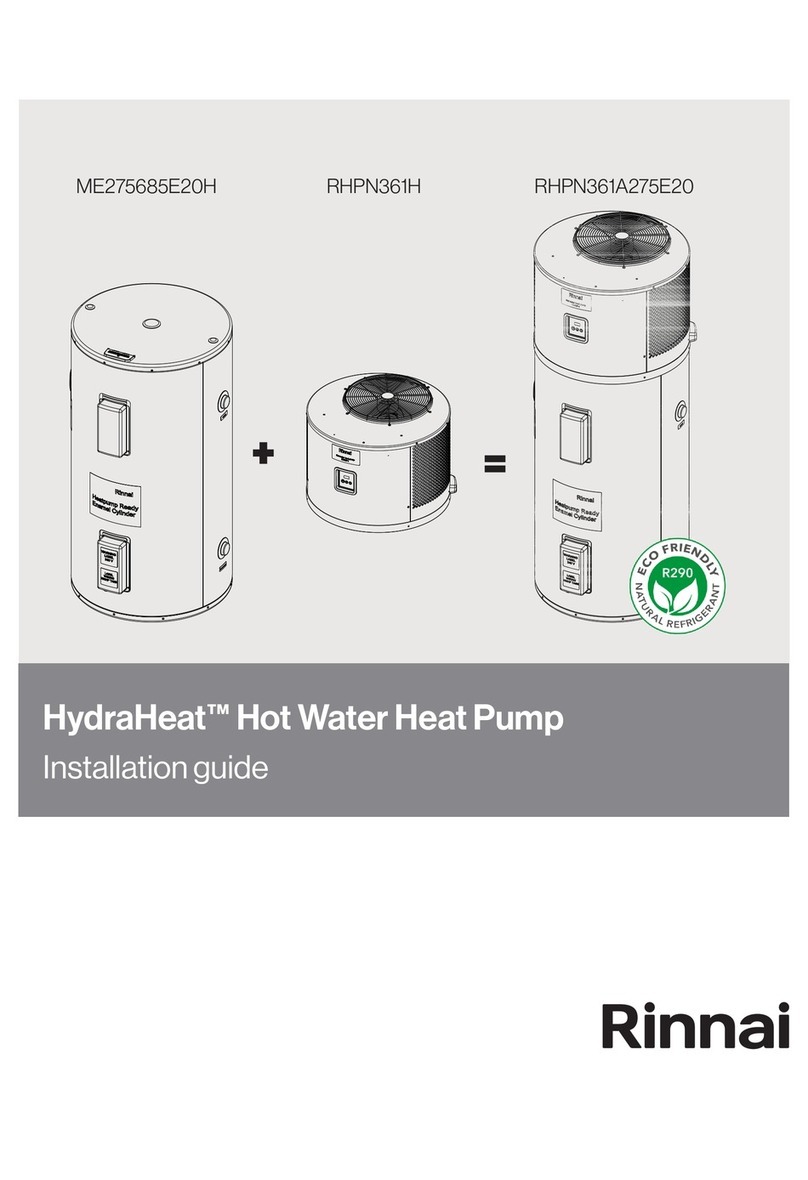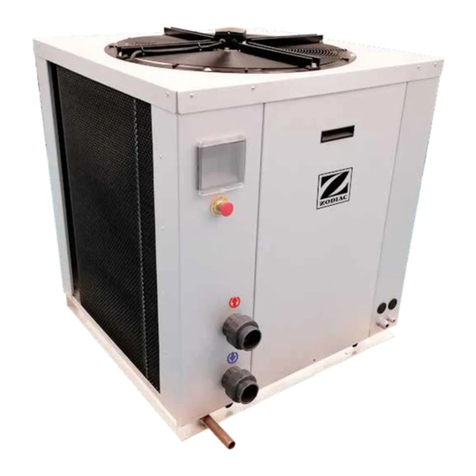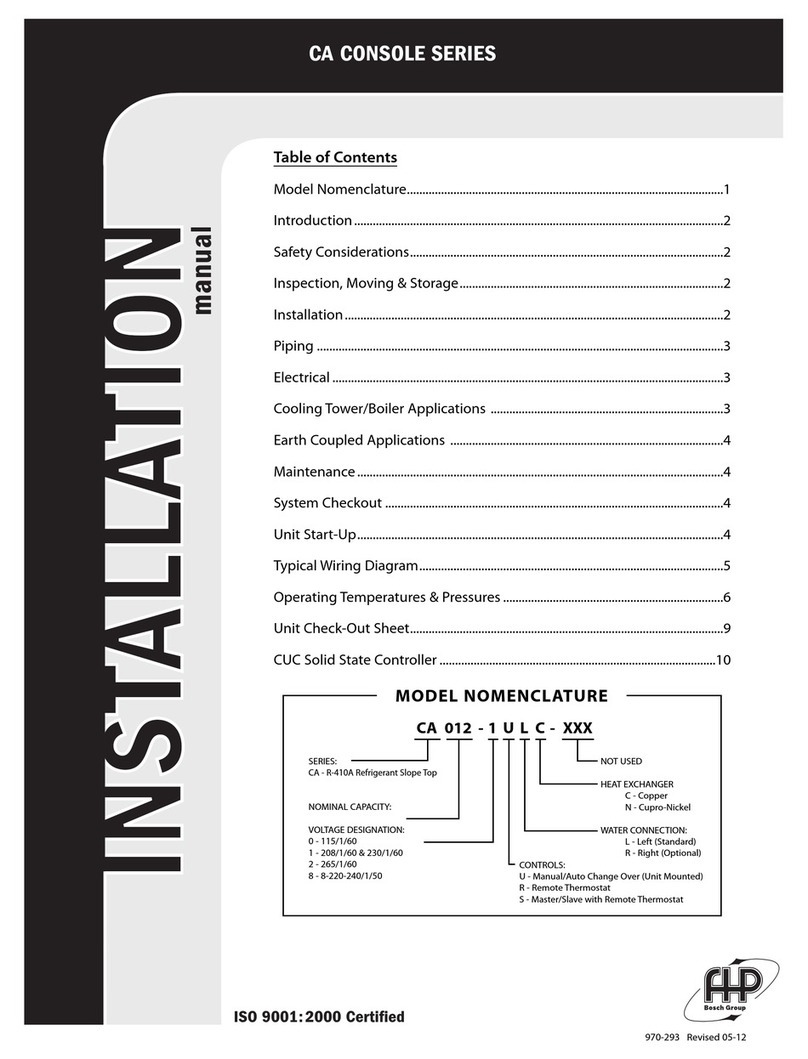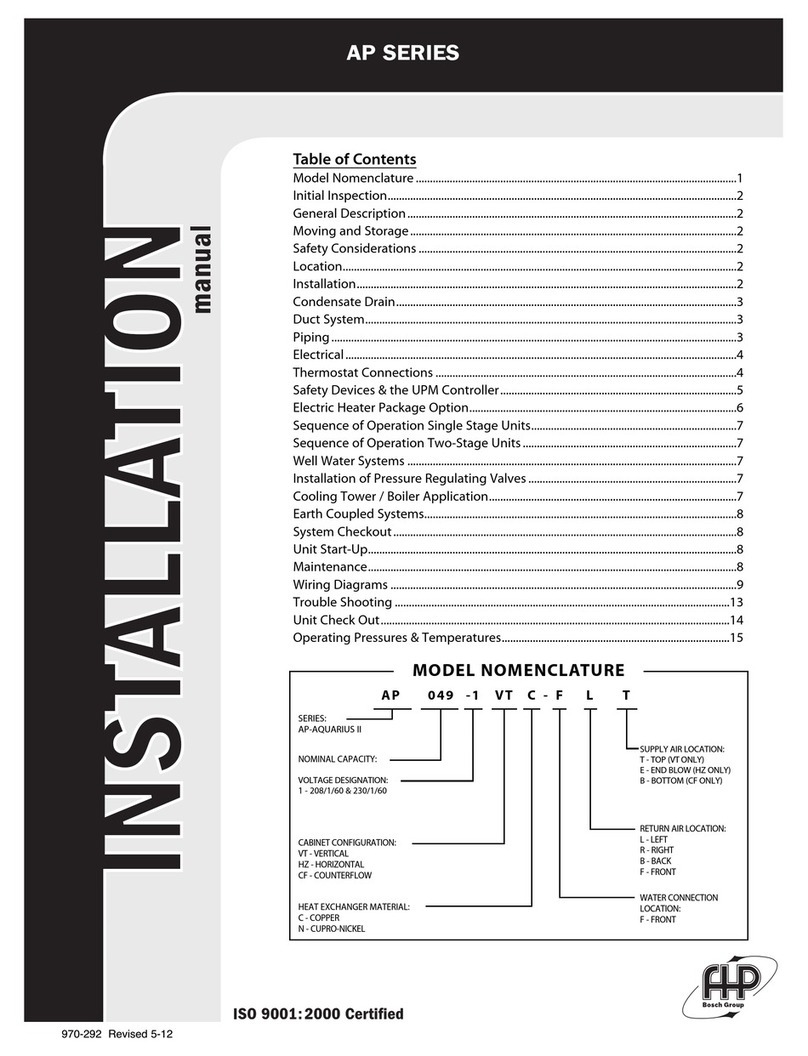SAFETY DEVICES AND THE LOCKOUT CIRCUIT:
Each EV Series unit is factory provided with a CCMI solid state
controller. The CCMI controller incorporates the standard
functions of electromechanical controls while adding several
useful features commonly needed in water source and
geothermal heat pump applications. In addition to the normal
control functions, the CCMI controller includes the following
features:
•RANDOM START - Each controller features a
random start ranging from 30 - 60 seconds.
•ANTI-SHORT CYCLE TIMER - 5 minute delay on break
timer to prevent compressor short cycling.
•LOW PRESSURE BYPASS TIMER - Bypasses the low
pressure switch for 90 seconds to avoid nuisance
lockouts during cold start up.
•HIGH PRESSURE SWITCH DELAY - One (1) second
delay provides switch stabilization on start up to prevent
nuisance lockouts.
•BROWNOUT/SURGE/POWER INTERRUPTION
PROTECTION - A 20 millisecond window is monitored
for the above condition. After the condition is detected,
the 5-minute delay on break timer is initiated in
conjunction with the random start timer before a restart is
allowed.
•MALFUNCTION OUTPUT - The controller has a set of
N.O. wet contacts for remote fault indication.
•TEST/SERVICE PIN - A jumper pin is provided to reduce
all time delay settings to 6 seconds during
troubleshooting or operation verification.
•L.E.D. INDICATORS - Two L.E.D. INDICATORS are
provided as follows:
GREEN: Power L.E.D. indicates voltage present at the
board.
RED: Fault indicator with blink code as follows:
1 BLINK - HIGH PRESSURE LOCKOUT
2 BLINK - LOW PRESSURE LOCKOUT
•INTELLIGENT RESET - If a fault condition is initiated the
5-minute delay on break period and the random start
timer are initiated and the unit will restart after the delays
expire. If the same fault condition is initiated a second
time . The unit will be locked out and requires lockout
reset.
•LOCKOUT RESET - Power must be removed from the
controller then reapplied for the reset. This can be
achieved by turning the unit thermostat off and then back
on or by shutting off unit power at the unit disconnect.
PIPING:
Supply and return piping must be as large as the unit
connections on the heat pump (larger on long runs). Never use
flexible hoses of a smaller inside diameter than that of the fluid
connections on the unit. EV Units are supplied with either a
copper or optional cupro-nickel condenser. Copper is
adequate for ground water that is not high in mineral content.
Should your well driller express concern regarding the quality
of the well water available or should any known hazards exist
in your area, we recommend proper testing to assure the well
water quality is suitable for use with water source equipment.
In conditions anticipating moderate scale formation or in
brackish water a cupro-nickel heat exchanger is
recommended.
Both the supply and discharge water lines will sweat if subject
to low water temperature. These lines should be insulated to
prevent damage from condensation.
All manual flow valves used in the system must be ball valves.
Globe and gate valves must not be used due to high pressure
drop and poor throttling characteristics. Never exceed the
recommended water flow rates. Serious damage or erosion of
the water to refrigerant heat exchanger could occur.
Always check carefully for water leaks and repair
appropriately. Units are equipped with female pipe thread
fittings. Consult the specification sheets for sizes. Teflon tape
sealer should be used when connecting water piping
connections to the units to insure against leaks and possible
heat exchanger fouling. Do not overtighten the connections.
Flexible hoses should be used between the unit and the rigid
system to avoid possible vibration. Ball valves should be
installed in the supply and return lines for unit isolation and unit
water flow balancing.
Pressure / temperature ports are recommended in both the
supply and return lines for system flow balancing. The water
flow can be accurately set by measuring the water-to-
refrigerant heat exchangers water side pressure drop. See the
unit specification sheets for the water flow and pressure drop
information.
CAUTION: Water piping exposed to extreme, low ambient
temperatures is subject to freezing.
WELL WATER SYSTEMS: (50°F EWT Min.) (Figure #5)
When a water well is used exclusively for supplying water to
the heat pump, the pump should operate only when the heat
pump operates. A 24-volt, double pole single throw (DP/ST)
contactor can be used to operate the well pump with the heat
pump.
When two or more units are supplied from one well, the pump
can be wired to operate independently from either unit. Two
24-volt double pole single throw relays wired in parallel are
required. An upsized VA transformer may be required in either
case.
When using a single water well to supply both domestic water
and water to the heat pump, care must be taken to insure that
the well can provide sufficient flow for both.
In well water applications, water pressure must always be
maintained in the heat exchanger. This can be accomplished
with either a control valve or a bladder type expansion tank.
Also, a slow closing 24-volt solenoid valve must be utilized to
prevent water hammer.
The discharge water from the heat pump is not contaminated
in any manner and can be disposed of in various ways
depending on local codes (i.e. discharge well, dry well, storm
sewer, drain field, stream, pond, etc.)
COOLING TOWER / BOILER APPLICATION: (Figure #6)
To assure adequate cooling and heating performance, the
cooling tower and boiler fluid loop temperature should be
maintained between 50° F to 75° F in the heating mode and
60° to 110° in the cooling mode. In the cooling mode, heat is
rejected from the unit into the water loop. A cooling tower
provides evaporative cooling to the loop fluid; thus,
maintaining a constant supply temperature to the unit.
When utilizing an open cooling tower, chemical water
treatment is mandatory to ensure the water is free of corrosive
materials.
4EV SERIES












